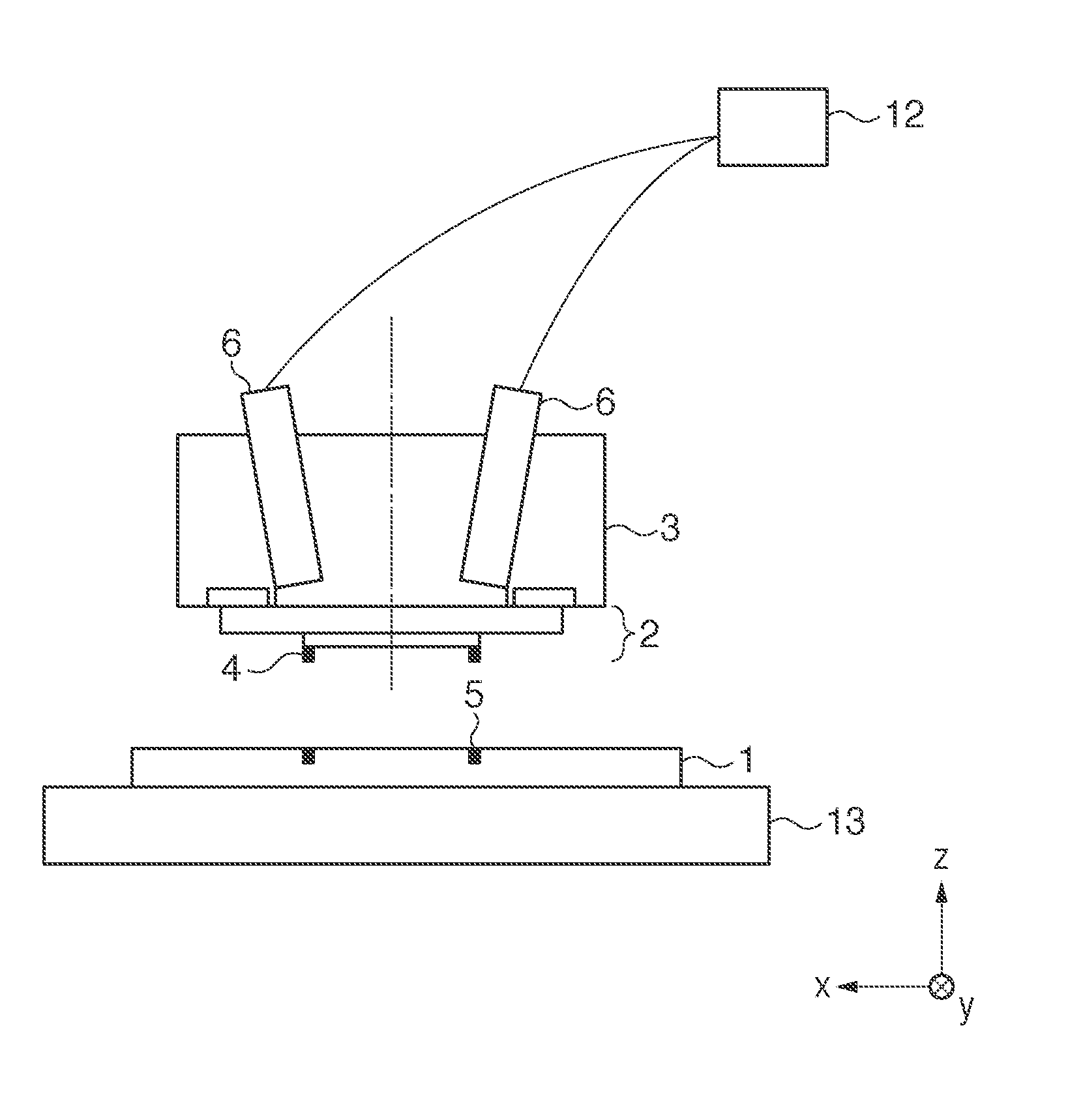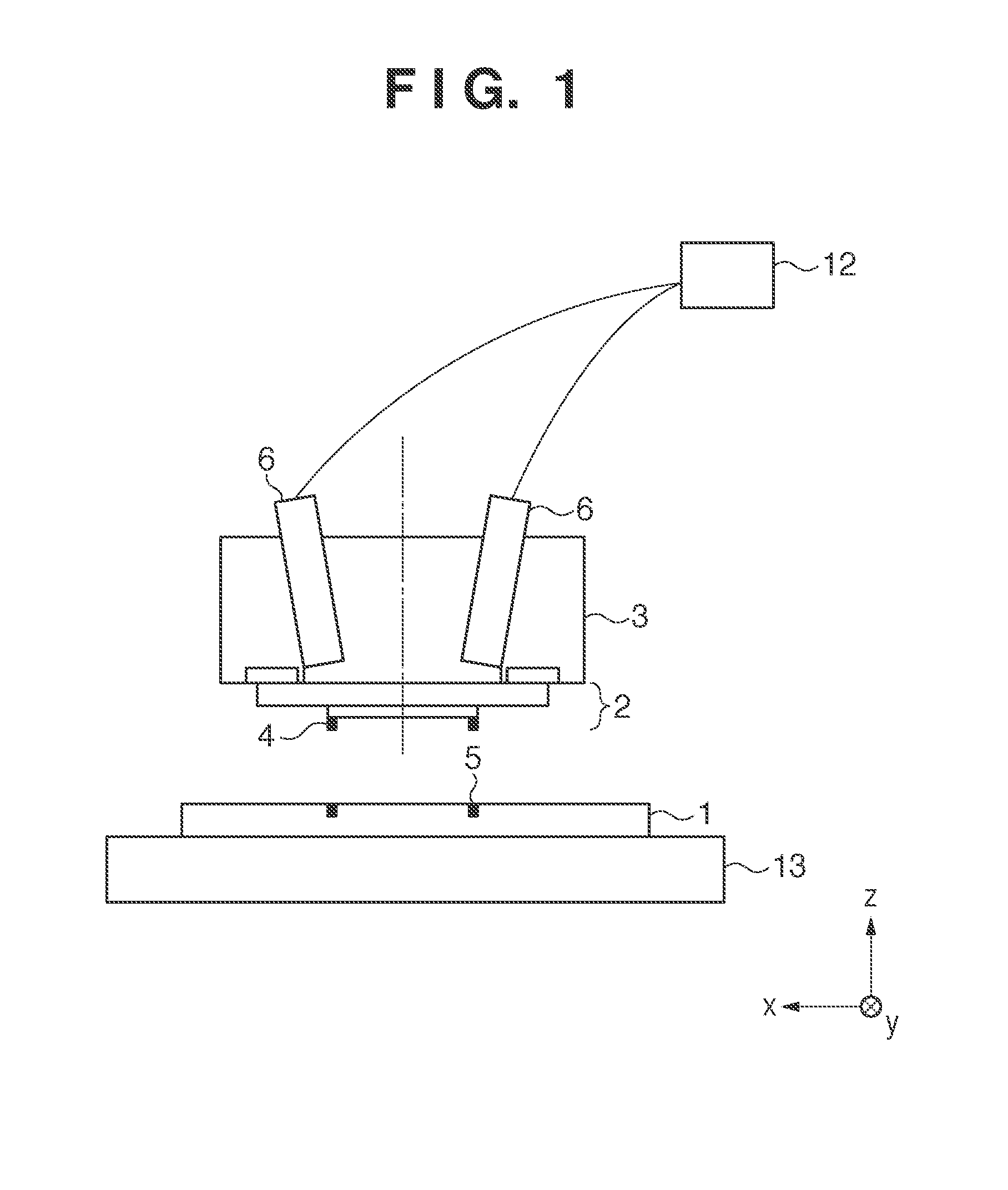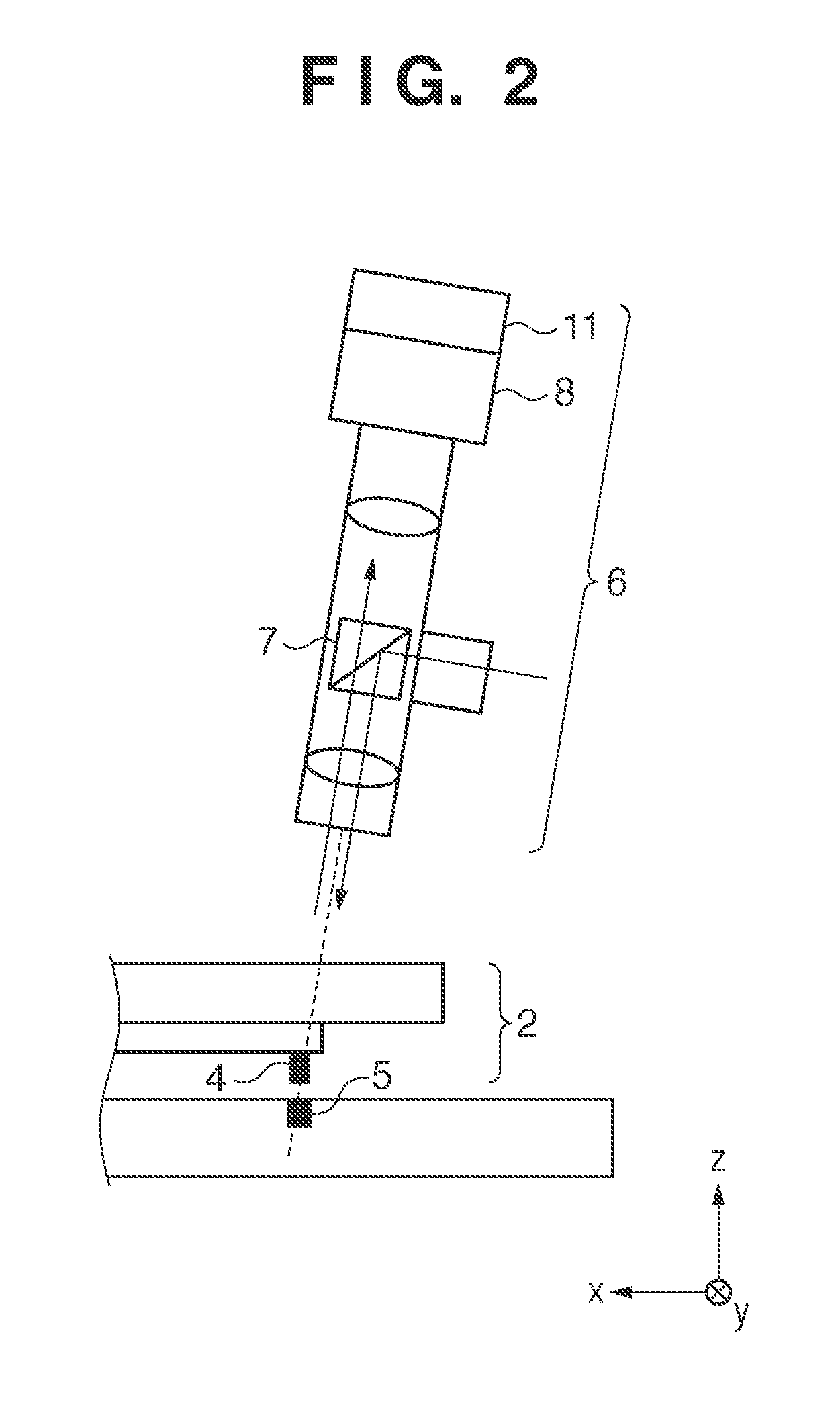Imprint apparatus and method of manufacturing article
a technology of printing apparatus and manufacturing method, which is applied in the direction of photomechanical apparatus, manufacturing tools, instruments, etc., can solve the problem that the detection light for detecting the position of the mark is often weak
- Summary
- Abstract
- Description
- Claims
- Application Information
AI Technical Summary
Problems solved by technology
Method used
Image
Examples
first embodiment
[0018]An imprint apparatus including a built-in detector according to the first embodiment will be described with reference to FIG. 1. The imprint apparatus performs an imprint process of dispensing an uncured resin onto a substrate 1 held by a substrate stage 13, pressing the pattern surface of a mold 2 against the resin, and curing the resin. The mold 2 is held by a holder (imprint head) 3. Detectors (scopes) 6 are placed in the holder 3. The scope 6 optically observes a mark (first mark) 4 formed on the mold 2 and a mark (second mark) 5 formed on the substrate 1, thereby detecting their relative positional relationship. The scope 6 is slightly tilted in order to ensure an optical path necessary to illuminate the resin from above with light for curing the resin in an imprint process. An adjusting device 12 including a driving mechanism and its controller can adjust the angle of the optical axis of the scope 6. The scope 6 uses, for example, a half prism 7 to guide light emitted by...
second embodiment
[0032]A detector according to the second embodiment will be described with reference to FIG. 9. Upon irradiation with broadband light with intensities in a wide wavelength range, a mark 5 on a substrate exhibits the performance of a diffraction grating, so different wavelengths are diffracted by different angles. FIG. 9 shows this mechanism, in which the diffraction angle is based on equation (1), (2), or (4). The wavelength λ of diffracted light is λ14 and the mark 5, thereby searching for a wavelength and a tilt angle which are optimum for measurement. Examples of indices of the optimum tilt angle are the intensity and contrast of the moire signal. A measurement method in this embodiment is the same as in the first embodiment.
third embodiment
[0033]A detector according to the third embodiment will be described next with reference to FIG. 10. FIG. 10 shows a scope 6 for measuring only a mark 4 on a mold 2. As the scope 6, the same scope as in the first embodiment may be used or a dedicated scope may be separately provided. Because a force acts on the mold 2 upon pressing and releasing the mold 2 in an imprint process, the mold 2 may shift with respect to an imprint head 3. In this case, the position of the mold 2 must be measured in real time. The mark 4 used for alignment with a mark 5 on a substrate 1, and a mark 4′ used to measure the position of the mold 2 are formed on the mold 2 shown in FIG. 10. The marks 4 and 4′ are designed to have different optimum diffraction angles in measurement by changing the pitch.
[0034]As a measurement method, the mark 4′ may be directly measured in the form of an image or signal intensity. Also, a reference mark 10 shown in FIG. 10 may be placed at a position optically conjugate to the ...
PUM
| Property | Measurement | Unit |
|---|---|---|
| Angle | aaaaa | aaaaa |
Abstract
Description
Claims
Application Information
 Login to View More
Login to View More - R&D
- Intellectual Property
- Life Sciences
- Materials
- Tech Scout
- Unparalleled Data Quality
- Higher Quality Content
- 60% Fewer Hallucinations
Browse by: Latest US Patents, China's latest patents, Technical Efficacy Thesaurus, Application Domain, Technology Topic, Popular Technical Reports.
© 2025 PatSnap. All rights reserved.Legal|Privacy policy|Modern Slavery Act Transparency Statement|Sitemap|About US| Contact US: help@patsnap.com



